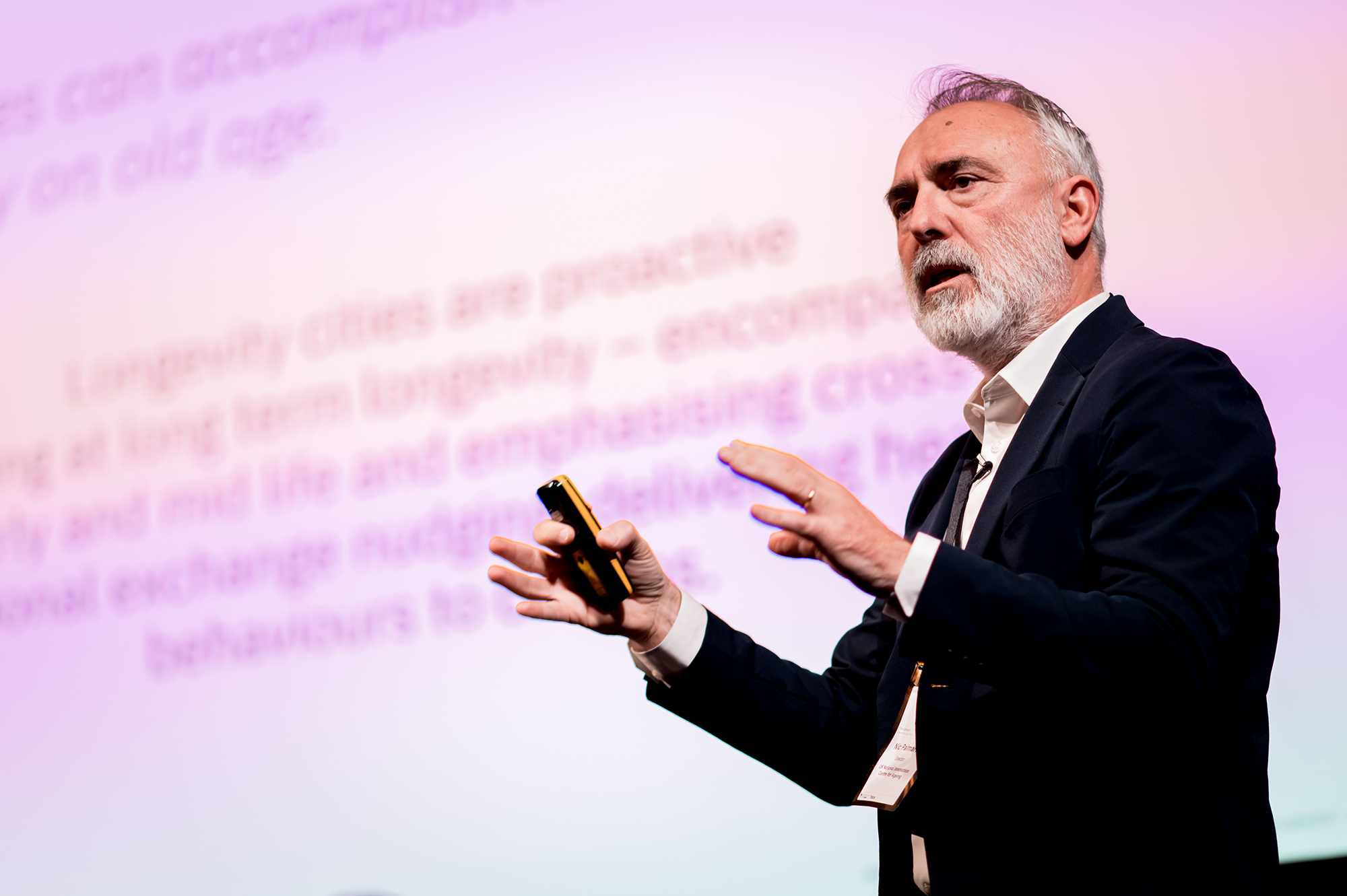Newcastle recently hosted the first City of Longevity Global Conference, bringing together city leaders, researchers and industry to consider the role of cities as proactive actors in suggesting and supporting healthier lifestyles for residents and visitors through day-to-day touchpoints. Here, the National Innovation Centre for Ageing (NICA) discusses its ambition to promote healthy longevity in the urban environment.
People worldwide are living for longer.
Every country in the world is experiencing growth in both the size and the proportion of older persons in the population.
By 2030, one in six people in the world will be aged 60 years or over, and, by 2050, the number of over-60s will more than double to 2.1 billion.
This staggering global demographic shift can be attributed to scientific advancements in the diagnosis and treatment of disease, with the average human life expectancy increasing more in the last century than across all prior millennia of human evolution combined.
We are entering an unprecedented period in the human story, one where lifespans stretching to 100 years and beyond will become almost routine.
These events effectively mark the transition from an ageing society to one of longevity, where the first responds retrospectively to changes in the age structure of the population, and the latter seeks to exploit the advantages of longer lives through changing how we age.
Achieving a longevity society requires substantial changes in our behaviours and social norms across the life course to delay the negative effects of ageing.
In parallel to this societal maturation is another important demographic change – urbanisation.
For the first time in history, 2008 marked the year with more people living in urban rather than rural contexts and, by 2050, around 68 per cent of the global population will be residing in cities.
Taken together, the changes associated with ageing and urbanisation will impact all areas of society, from healthcare strain, retirement funding and social isolation, to infrastructure demand, urban sprawl and social inequality.
At NICA, we are committed to helping local governments, planners and policymakers, as well as consumer brands and private businesses, prepare for – and proactively manage – the transition to a society of longevity.

This is what the City of Longevity is all about because cities, today more than ever, can play a decisive role in triggering and guiding the determinants that influence our health.
Given the multitude of challenges the world is experiencing, cities can and should do more than just implement emergency actions and policies; they need to see themselves as the proactive ‘champion of prevention’ and facilitator of citizens in the path to their healthy longevity.
The city is not an abstract entity or a simple urban or administrative concept.
It is an identity made by its communities – a daily interface that interprets and connects human beings to services, to the environment and to one another.
Where better, therefore, than cities to embed longevity principles and create a new companion for citizens of all generations to make choices that lead to longer and healthier lives?
But what are these longevity principles of which we speak?
Evidence suggests most of the diseases we suffer from can be prevented or mitigated with simple actions, related mainly in the realms of education and behaviour.
It is what we like to call the tiny, huge things that seem not to matter much at the time but, over the course of the life span, can have serious consequences on our health and wellbeing.
It is making the decision to walk to work rather than driving, the healthy option at lunch rather than the fast food, a chat with a friend rather than scrolling social media.
Moreover, it is introducing healthy behaviours as soon as possible during the life course.
Experience and many studies have made it clear that will power alone, though effective for some, will not succeed for most.
That is why one of the most powerful concepts behind the City of Longevity is addressing all the generations instead of targeting – like other models – the older adults only.

This helps not only to create the ground to develop longevity policies, but also stimulate an intergenerational dialogue and narrative.
This is where cities can be instrumental by influencing positive behavioural change through existing infrastructure and day-to-day touchpoints.
A City of Longevity encourages citizen mobility, nutrition, mental and physical health in a non-intrusive way, and also uses digital technology and data-driven approaches to engage citizens and measure impact and progress over time.
Thanks to sensors, connected devices, crowdsourced data and the increasing capacity of software and computers, it is now possible not only to better design policies involving the citizens, but also to measure more quickly and accurately what works and change – on the job – what doesn’t.
This is what we hope to achieve through our City of Longevity toolkit – an open-source, dynamic and flexible model to allow urban stakeholders to design longevity solutions that can then be measured and shared with other city managers, researchers and policymakers.
We have developed this in partnership with Stanford University’s Centre on Longevity and other international institutions, but the City of Longevity firmly belongs to us here in our home of Newcastle.
What we are really excited about right now is how we test and take forward our work in Newcastle and the wider North East.
And we want all agencies and organisations who deliver services, experience and value for residents and visitors to get in touch with us to see how we can collaborate.
Join us as we build cities of longevity, from Newcastle, for the world!
September 27, 2023
- Build & Sustainability

